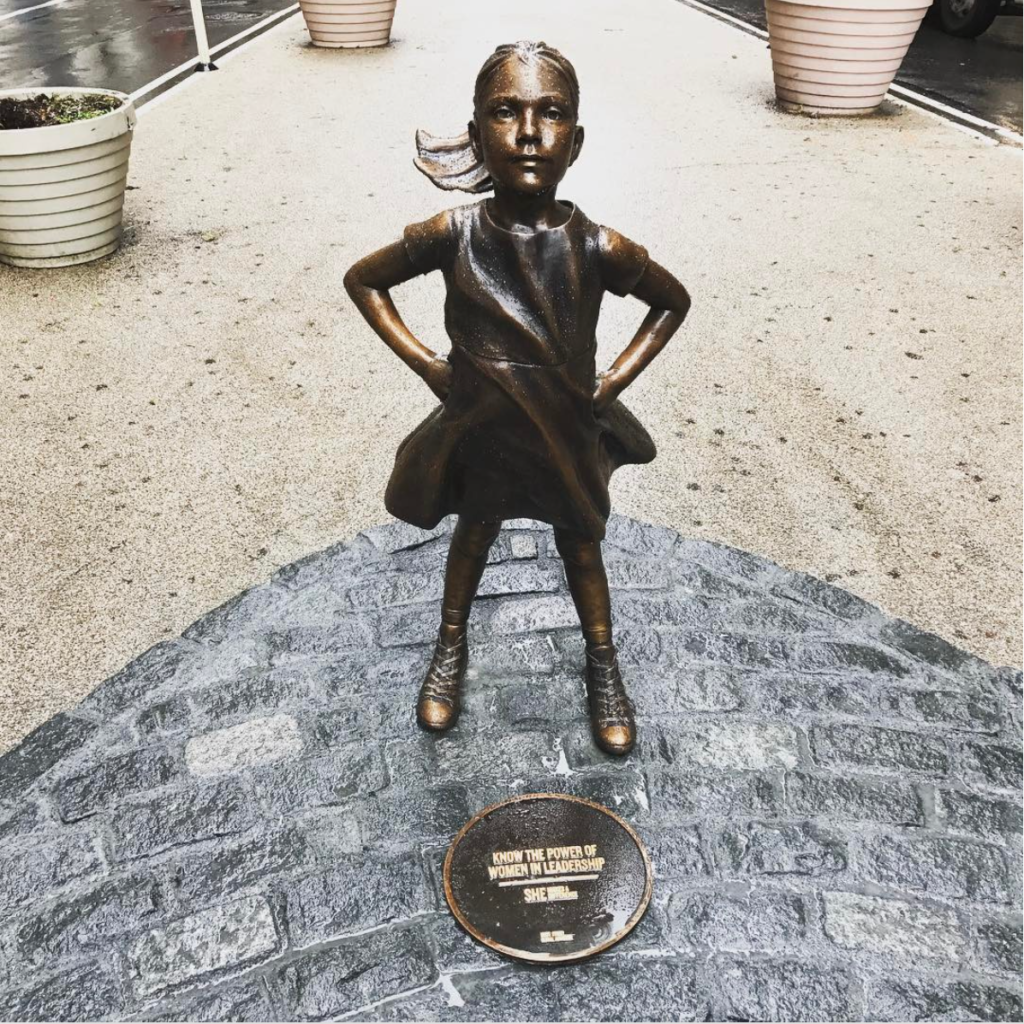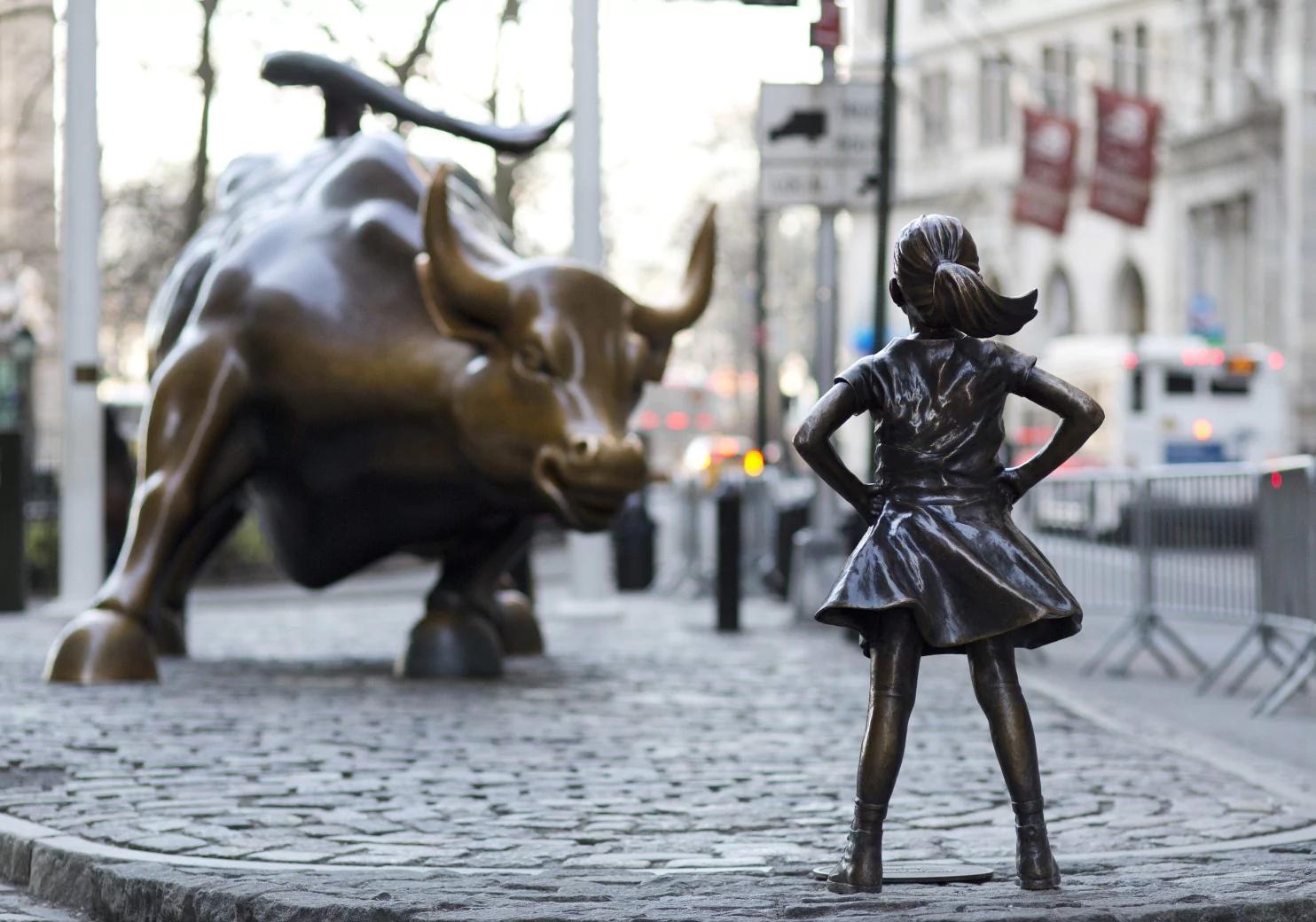How Did A Brand Learn Its Biggest Lesson? From Itself.
One of the biggest purpose-driven brand marketing stories of late is about a little girl standing up to the kings of Wall Street.
On International Women’s Day in 2017, a 50-inch bronze statue of a young Hispanic girl appeared, standing defiantly in front of Wall Street’s famous Charging Bull statue in Bowling Green.
She is Fearless Girl.
The statue was commissioned by McCann on behalf of its client, State Street Global Advisors, to promote the fund it had created to invest in companies that championed gender equality and women leadership.
At the bottom of the statue, a plaque proclaimed, ‘Know the power of women in leadership. SHE makes a difference.’ SHE not only acknowledged the little girl; it subtly acknowledged the promoted investment fund and its NYSE ticker acronym.
Almost immediately, the installation became a lightning rod of attention for advocates and critics alike.
The Charging Bull sculptor, Arturo Di Modica, recoiled at the installation facing down his creation. He dismissed it as a cheap advertising stunt.
Days later, fellow artist Alex Gardena made his own contribution, fashioning the sculpture of a dog urinating on Fearless Girl’s leg. He defended his action, saying Fearless Girl had nothing to do with feminism and everything to do with marketing.
Neither State Street Global, nor McCann, its agency, disagreed. They stated that the installation was clearly a marketing initiative, and had a city permit.

Fashioning Fearlessness
But as the popularity of the installation grew, and #FearlessGirl exploded on social networks across the world, New York Mayor Bill de Blasio supported a petition to extend the presence of the statue as part of New York’s temporary art series program. Within hours, tens of thousands of people had penned their support, and one evening, the plaque at the bottom of the statuette was removed.
Removing the plaque made Fearless Girl eligible as piece of art. And it was granted permission to remain standing until March 2018 – a full calendar year after it was first installed.
By then, the little girl on Wall Street had garnered worldwide renown and was being heralded at marketing awards shows everywhere. It won top honours at the Clio’s, Britain’s D&AD’s and New York’s One Show. But as she prepared to compete at the biggest show of all, the Cannes Advertising Awards Festival, controversy chased her once more.

It turned out that State Street Global, which had commissioned Fearless Girl to promote gender equality, had itself been accused of underpaying hundreds of female and minority employees. State Street Global agreed to pay a $5 million settlement to make amends.
Soon, shouts of ‘I told you so’ bellowed from detractors. The ad industry held its collective breath, wondering how Cannes judges would respond.
The response was overwhelming. Fearless Girl ended up receiving 4 Grand Prix trophies and 18 Lions. It became one of most awarded campaigns in Cannes’ history.
It’s rare for a brand’s purpose-driven strategy to steal all the attention from the brand itself. But that’s what happened with Fearless Girl. It became a phenomenon.
After the Fearless Girl year that was, State Street Global owned up to its pay inequality past: it created Leading Women, a collective of top female executives charged with mentoring other women employees in the firm. State Street Global also set strict equal hiring targets in its business practices.
In other words, the brand learned something from its own strategic brand purpose and the impact it had on the world.


This is a brilliant storey. Thank you for Sharing it.